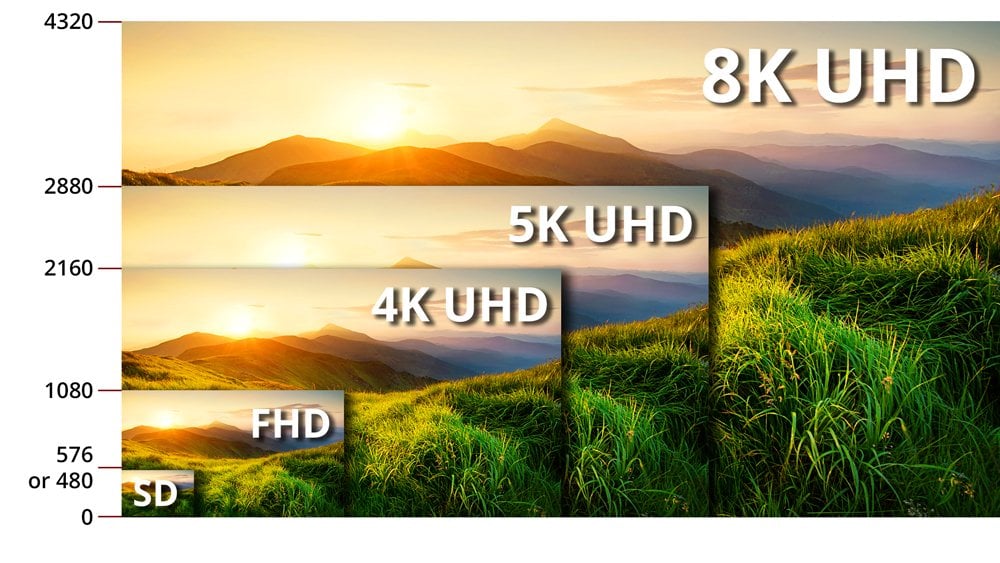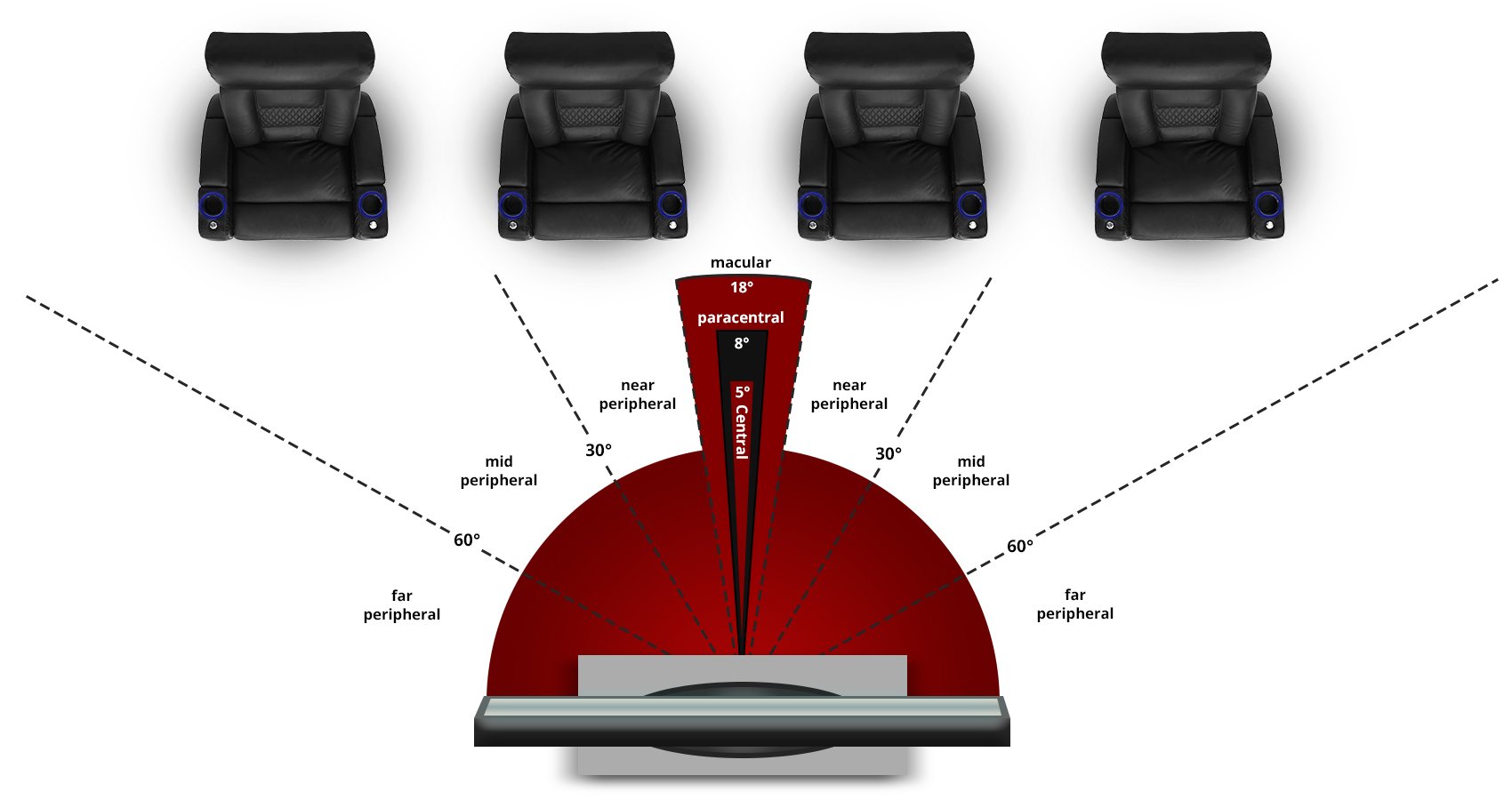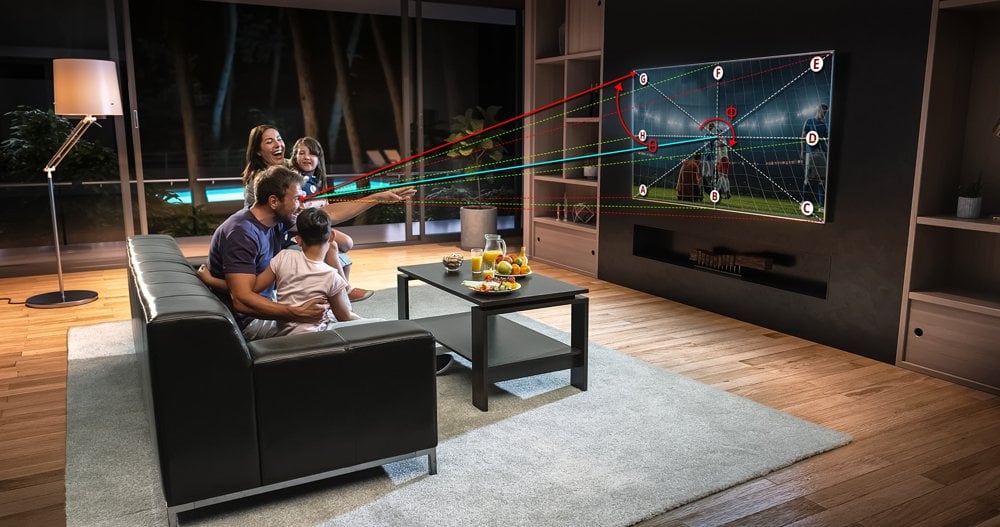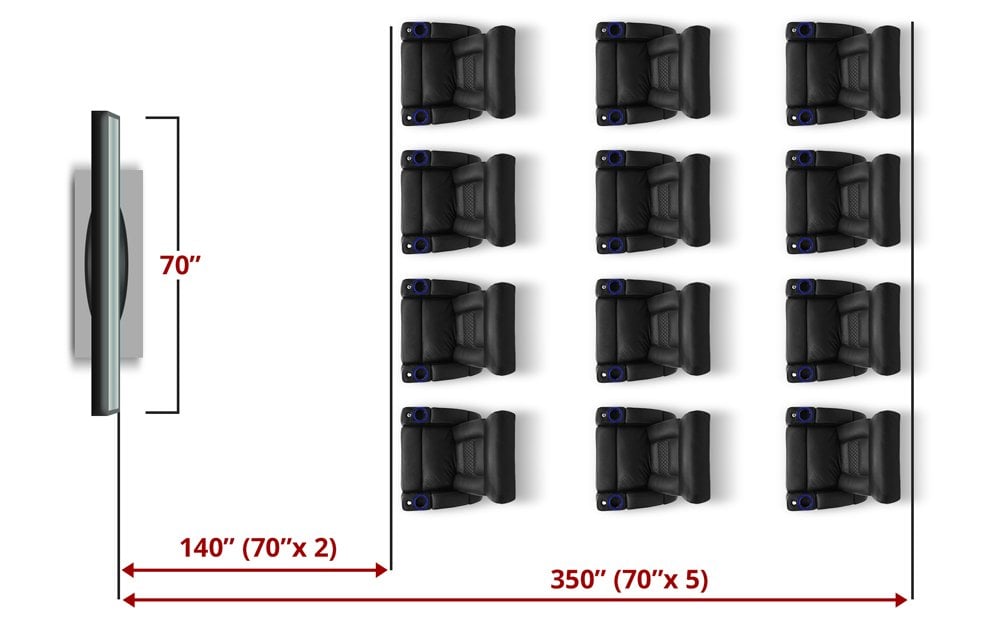A home theater system offers the ultimate movie experience. There is nothing like kicking back in your most comfortable recliner and enjoying a movie marathon of your favorite flicks. However, buying a top-of-the-line surround sound system and a huge projector screen isn’t enough to take your home theater experience to the next level. You also need to pay attention to your viewing distance if you want to ensure that all viewers enjoy a stunning movie experience. Still, very few people pay attention to these details.
The science of measuring your seating to screen distance comprises of several factors including the number of seats, seating arrangement, screen size, image resolution, and visual acuity. This post simplifies the process of creating the best visual experience for your movie theater setup.
1. Visual Acuity
Visual acuity is the term used to express the clarity or sharpness of the human vision. The term 20/20 vision corresponds to the normal visual acuity. In other words, if you have a 20/20 vision you can see an object clearly placed 20 feet away from you. When it comes to the home theater setup, visual acuity deals with the maximum distance beyond which human eyes won’t be able to see the picture due to the limitations of the eyesight.
This range is difficult to exceed in most home theater setups due to space constraint. However, if you were to exceed the visual acuity limit, the picture quality from an HDTV will appear similar to a traditional TV of the same screen size.
2. Image Resolution

The optimal viewing distance and screen size will depend on the resolution of the video. It is the total number of pixels displayed on the screen. So a 720 x 480 resolution means 720 x 480 = 345,600 pixels, while an HD TV with a resolution of 1920 x 1080 will have 1920 x 1080 = 2,073,600 pixels. If you have a full HD TV with a 1080p (1920 x 1080) resolution, the safest viewing distance is 5 feet or closer. However, for a 4K (3840 x 2160) resolution display screen of the same size, the distance will come down to only 3 feet. In other words, the higher the resolution, the shorter is the viewing distance.
So, if you have a slightly bigger audience size and relatively small home theater room, you may have to buy a TV or projector with higher resolution. On the other hand, if you are comfortable seating at a longer distance, you are better off buying a TV with relatively lower resolution. The bottom line is the ideal resolution and therefore the screen size depends on the width as well as the length of your home theater room. Check out this simple TV size to distance calculator based on the resolution and aspect ratio.
3. Horizontal Viewing Angle

The horizontal viewing angle also called the field of view is the angle subtended by from each corner of the display screen to the center of the seating position. If you are going to watch the TV alone (which is highly unlikely for a home theater setup) the horizontal angle wouldn’t matter that much. However, if you are going to have multiple row seating, a wider field of view can impact your viewing experience considerably.
Usually, the viewing angle, popularly known as the “sweet spot” is 40 degrees. You can use the following formula to calculate the viewing distance having a horizontal viewing angle of 40 degrees.
Distance X 0.84 = Screen Size
So, if your screen size is 60 inches, the distance should be 71.43 inches or around 6 feet. Alternatively, if you can arrange the seats at a distance of around 8 feet (i.e. 96 inches), the maximum recommended screen is around 80 inches.
4. Vertical Viewing Angle

The vertical viewing angle refers to the optimal height required to mount the TV. However, there is no universal standard for mounting your TV or home theater screen as they come in different sizes and shapes. However, you need to have the middle of the TV screen at eye level for an optimal and comfortable viewing experience. The optimal height is calculated from the center because most of the action takes place in the center third of the TV or screen.
Usually, most viewers experience physical discomfort when vertical viewing angle exceeds 35 degrees. That’s why you shouldn’t mount the TV or the screen higher on a wall. If the layout requires you to do so, make sure to a tilting TV bracket to adjust the TV to an optimal viewing angle. The best way to find out the optimal TV height is trial and error. Start at the lowest possible height and raise it until you can watch it comfortably from your favorite spot.
One more important factor you need to consider is the number of audiences. If you are going to have multiple row seating, you need to look for a comfort range rather an exact viewing angle.
5. Distance Between The Screen And The Seating

Calculating the exact distance between the screen and the seating is usually tricky because of the less ideal layout of the home theater room. So, instead of calculating the exact distance, it is necessary to measure the maximum and minimum distances. Determining the range of viewing distance will also allow you to arrange multiple rows of seats. Use the following simple formula to calculate the maximum and minimum distance.
Width of your TV or Screen (Not the diagonal length) X 2 = minimum distance
Width of your TV or Screen (Not the diagonal length) X 5 = maximum distance
So, if the width of your TV is 55 inches, the minimum viewing distance should be 110 inches or around 9 feet, while the maximum distance should be 275 inches or no more than 23 feet. In short, the first row of recliners should be placed at least 9 feet away from the screen. The last row should be no further than 23 feet from the screen. However, this formula will provide you with a rough idea of the distances. You can try this calculator for exact calculations.
Conclusion
A home theater system allows you to enjoy your favorite movies without leaving the comfort of your home. However, you need to think seriously about viewing distance before buying any of the expensive home theater equipment. You also need to consider several factors including seating arrangement, screen size, image resolution, and visual acuity while setting up your media room. This post will ensure that everyone enjoys a remarkable picture quality in your home theater.





